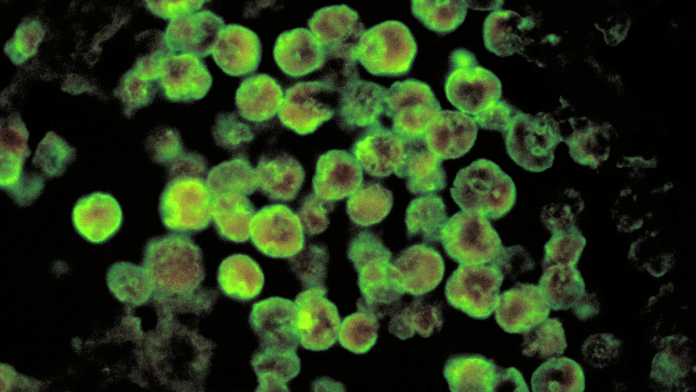New Delhi/Thiruvananthapuram: Kerala is on high alert after an alarming surge in fatalities caused by cases of Primary Amoebic Meningoencephalitis (PAM), a deadly brain infection caused by brain eating amoeba. It has claimed 9 lives this month, and a total of 19 in the last nine months, including a four-month-old baby.
So far this year, the state has confirmed 69 cases of the infection in various districts.
Brain eating amoeba (or Naegleria fowleri), called so because it infects the brain and destroys brain tissue, is a free-living amoeba, a unicellular organism that typically thrives in warm freshwater lakes, rivers, and hot springs. In rare cases, brain eating amoeba has also been reported in people exposed to water in swimming pools which were not chlorinated properly.
Early symptoms of PAM can include headache, fever, nausea, and vomiting but the condition progresses rapidly and many people with PAM die within 1 to 18 days after symptoms begin. It usually leads to coma and death after 5 days, experts say.
Globally, the fatality rate is over 90 percent, but in Kerala, it is relatively lower at under 30 percent. However, it is still alarmingly high and has put the administration on its toes.
Politics over the outbreak
The development has taken a political turn, with heated debates in the Kerala legislative assembly Wednesday after the Opposition moved an adjournment motion over the issue.
Introducing the adjournment, Palakkad’s Mannarkkad MLA N. Shamsudheen, from the UDF alliance led by Congress, said the government failed to explain the reason for the infection, which was being reported from across the state.
“The government has failed to understand the source and prevent the infection. The government is just saying that the fatality rate is low in Kerala,” Shamsudheen said.
But state Health Minister Veena George countered the point arguing that the Opposition is trying to mar the image of Kerala’s health department and there is much misinformation being spread about the infection.
“In India, there are many fatalities due to meningoencephalitis (brain infection). Globally, we were only able to find the reasons behind 45-50 percent of meningoencephalitis cases. In India, studies point that it’s 25-30 percent cases (where source was identified),” she said.
According to George, early detection of the brain eating amoeba has helped Kerala keep fatalities under 30 percent, when the global average is 97 percent.
The minister also said that beginning 2023, her department decided to notify all meningoencephalitis cases to understand their cause, following the Nipah virus outbreak in Kozhikode.
In the assembly, the state health minister meanwhile maintained that the PCR test to detect the infection was available only in two locations in India—Chandigarh and Puducherry—but has now been also made available in the state capital.
A testing facility will also be set up in Kozhikode, George informed the assembly adding that Kerala was the first state in India to prepare guidelines on the infection, which were available to the public.
Dr Aravind R, head of the department of infectious diseases at Government Medical College in Thiruvananthapuram, who is closely associated with the outbreak management initiative in the state, said that the state had invoked the Kerala Public Health Act to launch preventive and control measures.
“As it emerges that perhaps all waterbodies—wells, ponds, canals, swimming pools, water theme parks—could be a potential source of amoebic infection for people using them, (they need to be) regularly cleaned and maintained in good condition, and we are doing everything to ensure that they do not lead to infections,” he said.
Concern over wide area of cases
In India, the first two cases of brain eating amoeba had been first identified in 1971 in West Bengal when doctors examined the spinal fluid of children who came with features of brain infection. These children had reportedly survived the episode, underlined Dr Rajeev Jayadevan, a gastroenterologist and researcher from Kerala.
Statistics shared by the Kerala government show that since the infection was first detected in the state in 2016, there were 37 cases till 2024, of which 13 succumbed to the disease. But the number of infections and deaths have risen dramatically this year.
The epidemiology of the outbreak suggests that the cases are spread across multiple districts, not isolated.
“What makes it even more worrying is that some patients had no obvious exposure to ponds or swimming pools, and a few infants were affected despite minimal exposure. These features suggest the infection risk is wider and more unpredictable than previously believed,” pointed out Dr Sudhir Kumar, a neurologist from Hyderabad.
Climate change to blame?
A document prepared by the Kerala state health department and seen by ThePrint says that the free-living brain eating amoeba shows the clearest effects of climate change. It is thermophilic (an organism that thrives in warm environments) and one of its food sources is cyanobacteria, which flourishes in warmer waters.
Climate change has raised the water temperature and the heat is driving more people to ponds and swimming pools, raising the possibility of encounters with this pathogen.
Furthermore, rising temperatures may be expanding the geographical range of the Naegleria species. Many reported cases of PAM occurred in the weeks after an increase in air temperature, indicating a potential relation to climate change, the document adds.
The document advises, that every year, before the onset of summer or by February, public education campaigns must be launched focusing on ways to prevent infections.
Experts meanwhile stress that if the objective is to stop amoeba from infecting the brain, the most important thing to do is to avoid letting water enter the nose in large amounts during swimming or water sports.
(Edited by Viny Mishra)
Also read: Rare ‘brain-eating’ amoebic infection resurfaces in Kerala, Kozhikode district on alert






